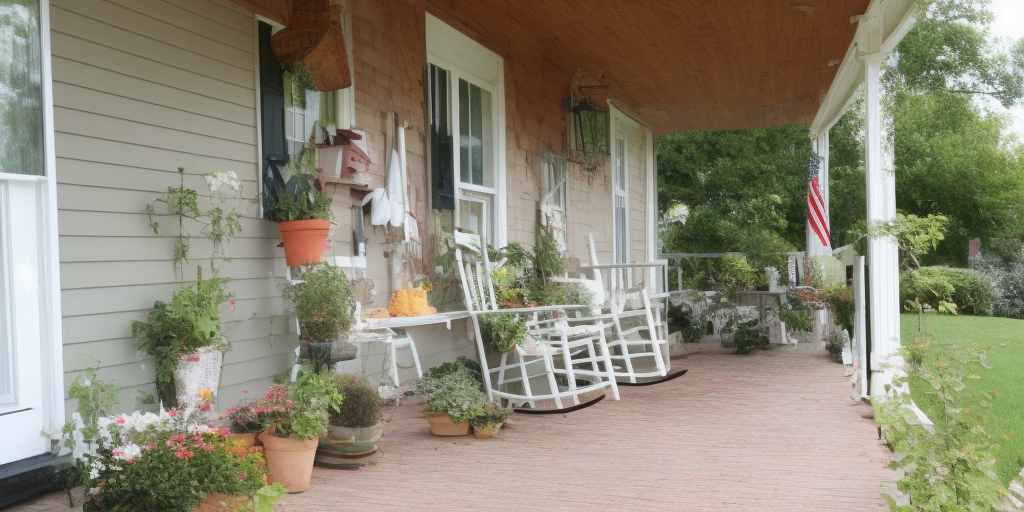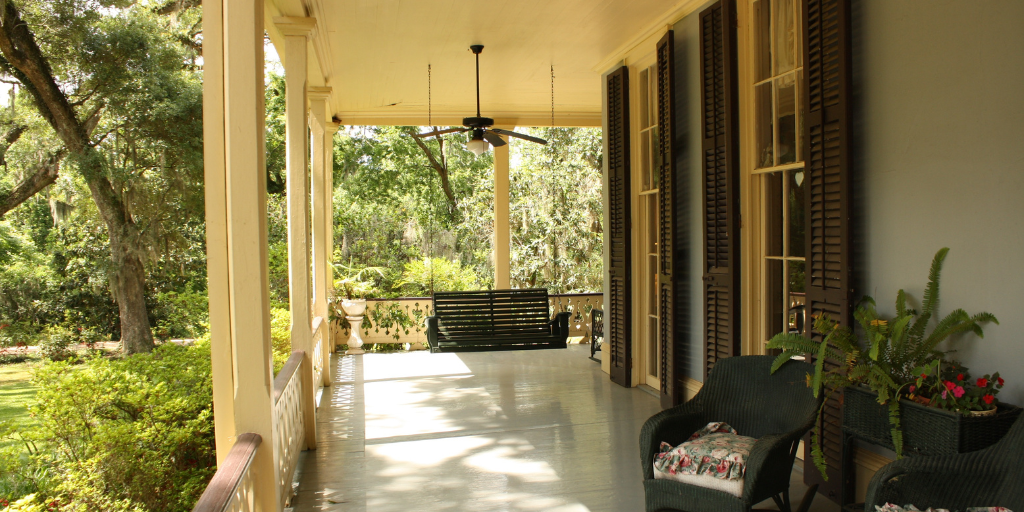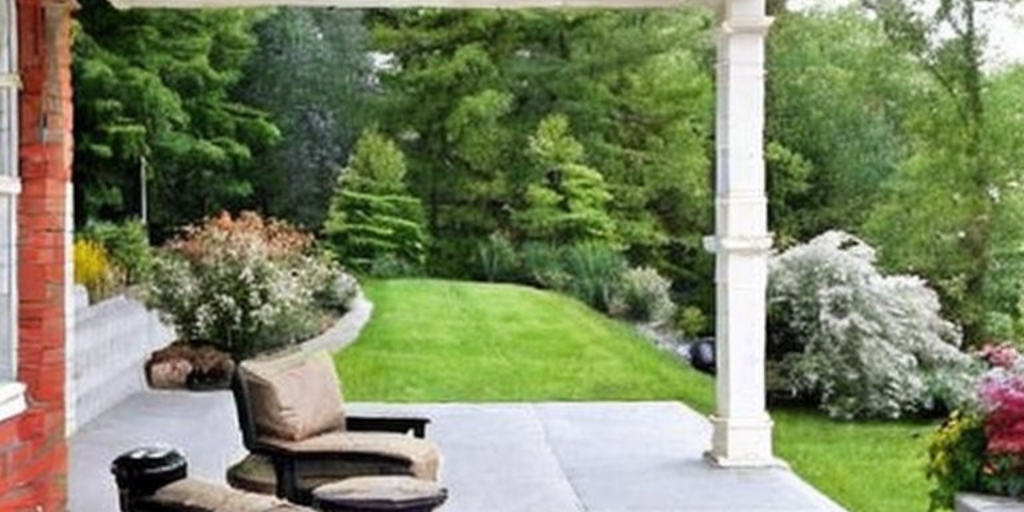If you want to know how to fix a porch that has settled, keep reading as it can be both unsightly and dangerous. A sunken or uneven porch can lead to trips, falls, and even structural damage to your home. Fortunately, there are ways to fix a porch that has settled and restore it to its former glory. We’ll discuss some of the common causes of porch settling, how to diagnose the problem, and some solutions for fixing a porch that has settled.


What causes a porch to settle, and how can it be fixed?
Contents
- 1 What causes a porch to settle, and how can it be fixed?
- 2 How do I know if my porch has settled, and what should I do about it?
- 3 Can a settled porch be dangerous, and how can I make it safe again?
- 4 What are some DIY methods for fixing a porch that has settled?
- 5 What are some common mistakes to avoid when fixing a settled porch?
- 6 How much does it cost to fix a porch that has settled, and what factors affect the price?
- 7 Can I prevent my porch from settling in the future, and how?
- 8 What materials are best for fixing a settled porch?
- 9 How long does it typically take to fix a porch that has settled, and what factors affect the timeline?
- 10 How to level a porch that has settled
- 11 Cost-effective solutions for fixing a settled porch
- 12 How to Fix a Porch That Has Settled – More Expensive Options
- 13 Conclusion on how to fix a porch that has settled
Porch settling is a common issue that can occur for a variety of reasons. One of the primary causes of porch settling is soil movement, which can happen due to changes in moisture content, weather patterns, or even the natural shifting of the ground over time. In some cases, improper grading or drainage can also contribute to porch settling, as can the use of low-quality or insufficient building materials.
Additionally, factors like age, wear and tear, and lack of maintenance can all contribute to porch settling. Fortunately, there are several ways to fix a porch that has settled. Depending on the severity of the settling, solutions may range from simple DIY repairs to more extensive structural work.
For example, some homeowners may be able to fix a settled porch by leveling it with new support posts or using specialized foam to lift and stabilize the foundation. Other homeowners may need to have a professional assess the problem and perform more complex repairs, such as reinforcing the porch structure or excavating and replacing the foundation.
Ultimately, the key to fixing a porch that has settled is identifying the cause of the problem and implementing the appropriate solution. By addressing the issue promptly and taking steps to prevent future settling, homeowners can ensure that their porch remains safe, sturdy, and attractive for years to come.
Whether you opt for a DIY approach or seek professional help, it’s important to treat porch settling as a serious issue that can affect the integrity of your home and the safety of your family. By taking action now, you can restore your porch to its former glory and enjoy it with confidence.
How do I know if my porch has settled, and what should I do about it?
There are several signs that can indicate a porch has settled, and it’s important to be aware of these to address the issue promptly. One of the most obvious signs of a settled porch is unevenness or a noticeable slope, which can be seen by visually inspecting the porch.
Other signs include cracks in the concrete or masonry, gaps between the porch and the house, or a wobbly or unstable feeling when standing on the porch. Homeowners may also notice doors or windows that don’t open or close properly, which can be a sign of foundation settling. If you suspect your porch has settled, it’s important to take action right away to prevent further damage and potential safety hazards.
The first step in addressing a settled porch is to diagnose the cause of the problem. This may involve inspecting the foundation, support posts, or other structural components of the porch to identify any damage or weaknesses. Homeowners may also want to consult with a professional to assess the situation and recommend the best course of action.
Depending on the severity of the settling, homeowners may be able to fix the porch themselves using DIY methods like adding support posts or using specialized foam to lift and stabilize the foundation. However, for more complex repairs or extensive settling, it’s recommended to seek professional help. By taking the necessary steps to fix a settled porch, homeowners can ensure the safety and stability of their home’s foundation and enjoy their porch for years to come.


Can a settled porch be dangerous, and how can I make it safe again?
A settled porch can be a serious safety hazard for homeowners and visitors. If left untreated, a settled porch can become unstable and may even collapse, leading to injury or property damage. Even if the porch doesn’t collapse, a sloping or uneven surface can increase the risk of trips, slips, and falls.
Additionally, a settled porch may cause doors and windows to become misaligned, which can make it difficult to properly secure the home. For these reasons, it’s important to take steps to make a settled porch safe again as soon as possible.
To make a settled porch safe again, homeowners will need to address the underlying cause of the settling and implement the appropriate repairs. Depending on the severity of the problem, this may involve simple DIY fixes like adding support posts or using foam to lift and stabilize the foundation, or more extensive structural work like excavating and replacing the foundation.
Homeowners may also need to consult with a professional to assess the situation and recommend the best course of action. Additionally, it’s important to take steps to prevent future settling, such as ensuring proper drainage and grading around the porch, using high-quality building materials, and performing regular maintenance and inspections. By taking these steps, homeowners can ensure that their porch is safe, stable, and secure for everyone who uses it.
What are some DIY methods for fixing a porch that has settled?
There are several DIY methods for fixing a porch that has settled, depending on the severity of the problem. For minor settling, homeowners can often level the porch using wooden shims or adjustable post jacks.
These tools can be used to add support and lift the porch back to its original position. Homeowners can also add additional support posts to help distribute the weight of the porch more evenly and prevent future settling. This method is especially effective for decks that have sunk in the middle or on one side.
Another DIY method for fixing a porch that has settled is using specialized foam to lift and stabilize the foundation. This method involves drilling small holes in the concrete and injecting a foam that expands and hardens, lifting the porch back to its original position.
The foam also helps to fill in any gaps or voids beneath the porch, providing additional stability and support. This method is often faster and more cost-effective than other solutions, making it a popular choice for homeowners who want to tackle the problem themselves. However, it’s important to note that this method may not be suitable for severe settling or more complex structural issues, and homeowners should always consult with a professional before attempting any DIY repairs.
When should I call a professional to fix my settled porch?While DIY methods can be effective for minor settling issues, there are some situations where it’s best to call a professional to fix a settled porch. If the settling is severe or widespread, or if there are significant cracks or damage to the porch, it’s important to seek professional help.
A professional can inspect the porch and foundation and determine the cause of the problem, as well as recommend the best course of action for repairs. They may also have access to specialized tools and equipment that can make the repair process more efficient and effective.
Additionally, it’s important to call a professional if you’re not comfortable or familiar with the repair process. Fixing a settled porch can be a complex and time-consuming task, and it’s important to ensure that the repairs are done correctly to avoid further damage or safety hazards.
A professional can provide the necessary expertise and experience to get the job done right. They can also help to identify any other issues or potential risks that may need to be addressed, such as drainage or grading issues. By calling a professional to fix a settled porch, homeowners can ensure that their porch is safe, stable, and secure for years to come.
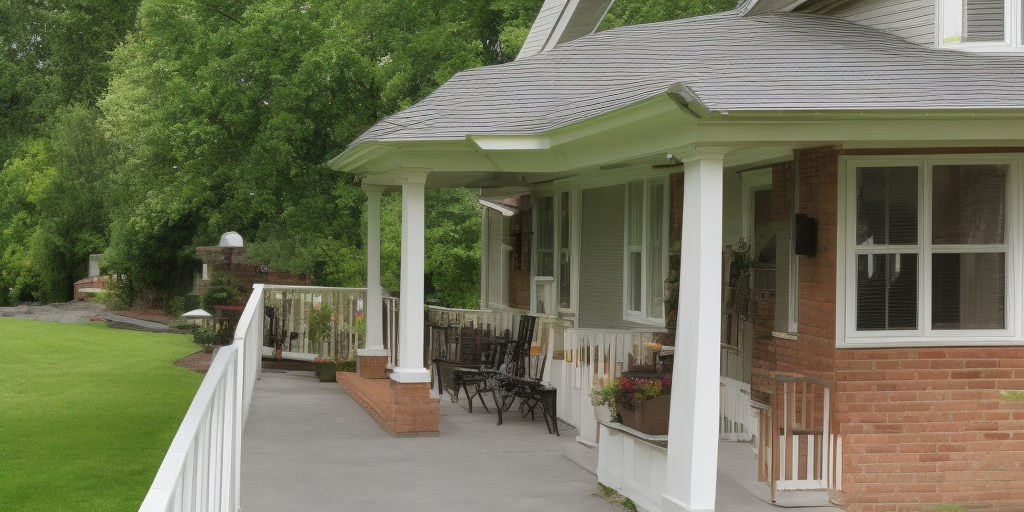

What are some common mistakes to avoid when fixing a settled porch?
Fixing a settled porch can be a challenging task, and there are several common mistakes that homeowners should avoid when attempting to fix the problem. One common mistake is failing to properly address the underlying cause of the settling.
For example, if the porch settled due to poor drainage or soil compaction, simply adding support posts or shims may not be enough to prevent future settling. Homeowners should ensure that they understand the root cause of the problem and take steps to address it before attempting any repairs.
Another common mistake is attempting to fix a settled porch without the necessary tools or experience. This can lead to further damage or safety hazards, and may ultimately require more extensive repairs or professional help. It’s important to use the right tools and materials for the job, and to follow proper safety precautions when working on the porch.
Homeowners should also be aware of their own limitations and seek professional help if they’re unsure of how to proceed. By avoiding these common mistakes and taking a careful, thorough approach to fixing a settled porch, homeowners can ensure that their porch is safe, stable, and secure for years to come.
How much does it cost to fix a porch that has settled, and what factors affect the price?
The cost of fixing a porch that has settled can vary widely depending on the severity of the problem, the size and type of porch, and the materials and methods used for repair. In general, homeowners can expect to pay anywhere from a few hundred to several thousand dollars for porch repairs.
For minor settling issues, such as adding support posts or shims, the cost may be relatively low. However, for more extensive repairs, such as lifting and stabilizing the foundation or rebuilding a damaged porch, the cost can be significantly higher.
Several factors can affect the price of fixing a settled porch. One of the biggest factors is the extent of the settling and the amount of damage to the porch. If the settling is severe or widespread, or if there is significant damage to the porch, the cost of repairs may be higher. The size and type of porch can also affect the cost, as larger porches or more complex designs may require more materials and labor to repair.
Additionally, the materials and methods used for repair can affect the cost. For example, using specialized foam to lift and stabilize the foundation may be less expensive than rebuilding the porch from scratch using high-end materials. Homeowners should consult with a professional to get an accurate estimate of the cost of fixing a settled porch, as well as the best course of action for repairs.
Can I prevent my porch from settling in the future, and how?
While it may not be possible to completely prevent a porch from settling, there are several steps that homeowners can take to reduce the risk of settling and prolong the life of their porch. One of the most important steps is to ensure that the porch is built on a stable foundation, with proper drainage and grading to prevent water from pooling around the foundation.
Homeowners should also ensure that the porch is built using high-quality materials and construction methods, and that it is regularly inspected and maintained to identify and address any issues before they become more serious.
Another important step is to monitor the porch for signs of settling or damage, such as cracks, uneven surfaces, or gaps between the porch and the house. If any issues are identified, it’s important to take action quickly to prevent further damage or safety hazards.
Homeowners should also ensure that any changes or additions to the house or landscaping are done with proper consideration for the porch and foundation, and that the porch is not overloaded with excessive weight or pressure. By taking these steps and being proactive about porch maintenance and care, homeowners can help to reduce the risk of settling and keep their porch safe and stable.
What materials are best for fixing a settled porch?
The best materials for fixing a settled porch will depend on the extent of the settling and the type of repairs that are needed. For minor settling issues, such as adding support posts or shims, pressure-treated lumber or composite materials may be sufficient. These materials are affordable, readily available, and durable enough to provide the necessary support for the porch.
For more extensive repairs, such as lifting and stabilizing the foundation or rebuilding a damaged porch, higher-end materials may be necessary. For example, steel or concrete piers can be used to support the foundation and prevent further settling, while high-quality lumber or composite materials can be used for the decking and framing.
Specialized foam can also be used to lift and level the foundation without the need for extensive excavation or reconstruction. When choosing materials for porch repair, it’s important to consider the quality, durability, and compatibility with the existing porch structure to ensure that the repairs are effective and long-lasting. Homeowners should consult with a professional to determine the best materials and methods for their specific porch repair needs.
How long does it typically take to fix a porch that has settled, and what factors affect the timeline?
The timeline for fixing a porch that has settled will depend on several factors, including the extent of the settling, the type of repairs that are needed, and the materials and methods used for repair. For minor settling issues, such as adding support posts or shims, the repairs may be completed in a matter of hours or days. However, for more extensive repairs, such as lifting and stabilizing the foundation or rebuilding a damaged porch, the repairs may take several weeks or more.
One of the biggest factors that affects the timeline for porch repairs is the extent of the settling and damage. If the settling is minor and localized, the repairs may be relatively quick and straightforward. However, if the settling is severe or widespread, or if there is significant damage to the porch, the repairs may take longer and require more extensive work.
The type of repairs needed can also affect the timeline, as more complex repairs such as foundation lifting or reconstruction may take longer than simpler repairs. Additionally, the availability of materials and labor can affect the timeline, as some materials or specialized labor may need to be sourced or scheduled in advance. Homeowners should consult with a professional to get an accurate estimate of the timeline for porch repairs, as well as the best course of action for repairs.
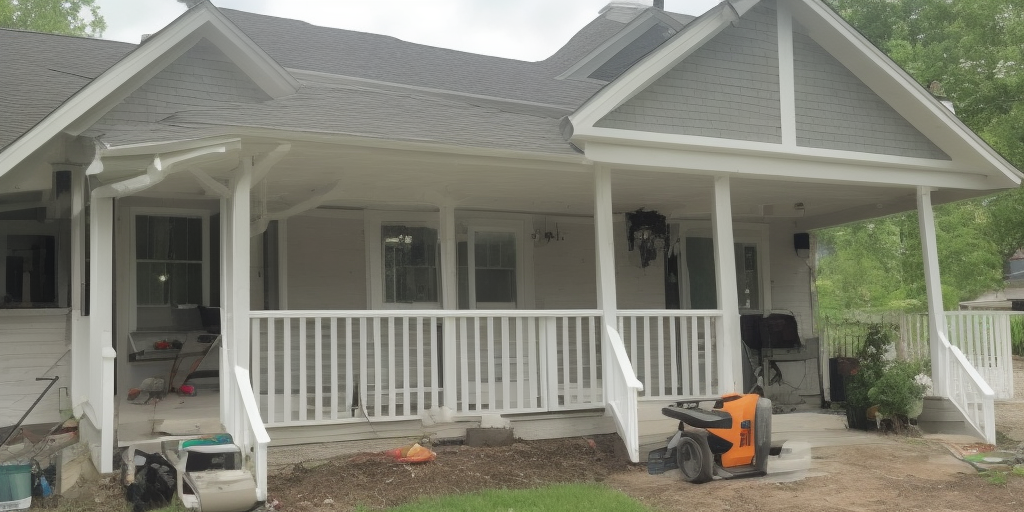

How to level a porch that has settled
Leveling a porch that has settled can be a challenging task, but it is an essential step for ensuring the safety and longevity of the porch. One of the first steps in leveling a porch is to determine the extent of the settling and identify the areas that need to be raised. This can typically be done by examining the porch for any areas of visible sagging or damage, or by using a level to identify areas where the porch is uneven.
Once the areas of settling have been identified, homeowners may use a range of methods to level the porch. These can include adding support posts or shims to raise the porch, or using specialized equipment to lift and stabilize the foundation.
In some cases, it may be necessary to reconstruct portions of the porch to achieve a level surface. Homeowners should take care to choose the appropriate method for their porch based on the extent of the settling and the cause of the settling, as well as any safety considerations. It may also be helpful to consult with a professional for guidance on leveling the porch, especially for more complex repairs.
Cost-effective solutions for fixing a settled porch
Fixing a settled porch can be a costly endeavor, especially for more extensive repairs. However, there are some cost-effective solutions that homeowners can consider to fix a settled porch without breaking the bank. One option is to use shims, which are thin pieces of material that can be placed under the porch supports to help raise the porch and level the surface. Shims can be made from a range of materials, including wood, plastic, or metal, and are relatively easy to install.
Another cost-effective solution for fixing a settled porch is to add additional support posts to the porch. These posts can help distribute the weight of the porch more evenly and prevent settling from occurring in the future. Homeowners may also consider adding a concrete footing under the support posts to provide additional stability.
While adding support posts can be more labor-intensive than using shims, it is still a relatively affordable option for fixing a settled porch. It is important to note, however, that these solutions may not be appropriate for all types of porch settling, and it may be necessary to consult with a professional to determine the best course of action for repairing the porch.
How to Fix a Porch That Has Settled – More Expensive Options
Some of the more expensive options for fixing a porch that has settled are listed here below. These include options, such as helical piers, PolyLevel, SmartJack System(r), and mudjacking. While none of these methods are foolproof, they should help you level your porch. Check out these methods to restore and enjoy the use of your porch again. You will also get a more detailed understanding of those mentioned before like foam and its benefits.
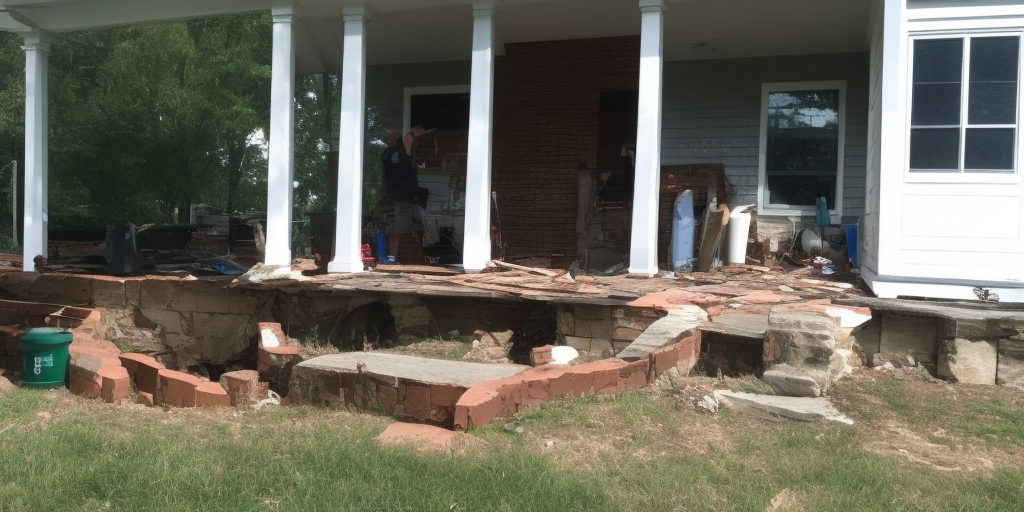

PolyLevel
After our front porch started sinking two inches and sagged, we called Quality 1st Basement Systems to help us fix it. Jeff explained that the soil underneath the porch had become too weak to support the weight of the concrete. Rather than replace the entire porch slab, he recommended PolyLevel. PolyLevel provides additional support and stabilization for the existing slab. This method is safe, environmentally friendly, and quick.
The polymer injection process used by PolyLevel(r) uses two liquids – a polymer and a solvent. These liquids chemically react to form an expanding foam that flows into the settled concrete. Once injected, the foam will expand 15 times its original volume and lift the porch. A skilled technician will control the pressure and work quickly to prevent the PolyLevel from hardening and causing further damage.
If you live in Louisiana, you have many options for fixing uneven or cracked concrete. Concrete leveling products like PolyLevel repair can solve these problems quickly and easily. These products are supported by a national network that supports its use. To find a contractor near you, search for PolyLevel in your area. You can view photos of their past work to see how the concrete can be leveled with PolyLevel.
Some contractors will opt for the old school method of fixing concrete that has settled. This involves demolishing the settled portion and pouring a new concrete deck. However, this method can result in yard damage and may even cause the pool to close. PolyLevel, on the other hand, will raise the concrete to the proper level, strengthen the soil beneath and make the area safer to walk on. This is an environmentally friendly method of fixing concrete.
Helical piers
One of the first signs that your porch has sunk is a large crack. If the crack is large enough, it may be a sign of a serious foundation problem. You can use underpinning to level out uneven ground and stabilize your porch. Helical piers are screw-like steel rods that are installed underneath pre-existing walls and stabilize your porch. These piers can even help lift the support columns of your porch, preventing further settling and cracking.
The process of using helical piers is relatively simple. These piers twist into the ground and then attach to a bracket at the foundation footing. The weight of the house is then transferred through the helical piers to the soil beneath. You can install them near an existing foundation to avoid damaging nearby structures and wildlife. This method is quick and easy, and requires less digging and less soil disposal than traditional methods.
One important consideration is the piers’ length. Helical piers typically extend 21 feet, and most homes within the service area can get away with just that. But your soil may not be sufficiently stable for 21 feet. If so, you may need to extend your piers by up to 20 feet. This will cost an extra $20, but it will be well worth it in the end.
Another common repair method for a sagging porch foundation is to install helical piers. These piers are made of large, steel pins that are positioned under the foundation. Typically, they are used for new construction projects where the foundation is deep and soil conditions are not ideal. They are also sometimes used for lifting and leveling foundations. In either case, helical piers raise the structure by lifting it above the foundation.
SmartJack System(r)
If your porch has settled, you may be interested in using the SmartJack System(r). This patented pier system is an adjustable steel pier that helps raise sagging floors. Because it is made from corrosion-resistant galvanized steel, the SmartJack won’t rot or settle like wood posts will, and it will stay adjustable for years. You can have the SmartJack System(r) installed by a certified installer in Charlotte or Charleston. The SmartJack System is easy to install and can be done in as little as a day.
If the beams and joists on your porch are sagging, the SmartJack system is the perfect solution. The system consists of heavy-duty steel posts that are positioned in the crawl space to correct sagging. The system can also be adjusted over time to correct other problems such as cracked walls or out-of-level door frames. The SmartJack System can also be used in combination with a crawl space vapor barrier system.
The SmartJack System(r) is compatible with crawl space encapsulation systems. It solves the problem of sagging floor joists by eliminating moisture problems and improving home energy efficiency. Because SmartJack’s weight is shifted to the soil, the SmartJack reduces ninety percent of the load when reaching the soil. The system also eliminates the need to use additional foundation repair products like a crawl space encapsulation system.
Mudjacking
If your front porch has sunk, you may have considered mudjacking the concrete. This method lifts the settling concrete by injecting a polyurethane foam slurry. This method has some disadvantages, however: it can be costly and disruptive, and it may require you to replace the porch. In contrast, mudjacking can restore your porch’s stability in a few hours, and the process is neither intrusive nor messy. Once it is done, your porch will be ready to use in a few hours.
During mudjacking, small holes are drilled in the concrete slab. The slurry fills the gaps between the concrete slab and the beam above. The slurry then forces the concrete to rise and solidify the subsoil. Once the concrete has been lifted, the holes are filled with cement. This is an excellent way to prevent further sinking. Mudjacking is not a permanent solution, however, and the process is not recommended for every situation.
It is essential to hire a qualified mudjacking contractor to perform the work. The best mudjacking companies have experience in this field and have a good track record. HomeGuide has many reviews and testimonials for these professionals. You can also choose the contractor according to their expertise and experience. It is best to hire a professional if you want the job to last as long as possible.
Although mudjacking is an effective way to lift a slab, it is important to know that it is not a simple process and can be harmful if done incorrectly. For example, the process can cause broken slabs, a dusty house, and big ugly holes. It can even ruin the landscaping of your home. And if you don’t know how to do it right, you may end up tearing out the slabs and redoing the entire floor.
Polyurethane foam
If you’ve had a porch that has settled, polyurethane foam may be the solution for you. This foam is made from two kinds of plastic, urethane and polyol. These two chemicals mix together to form a durable, waterproof material that expands to provide structural support and re-leveling properties. This material is also non-invasive, environmentally-friendly, and doesn’t require any special tools. Unlike traditional methods, polyurethane foam can be injected into a concrete slab and hold up to seven-hundred pounds of weight per square foot.
If the porch is on a concrete slab, polyurethane foam injections can raise the settling slab, a process known as polyjacking. Polyurethane foam is much more effective than a mud-cement-slurry mix that can exacerbate the problem. Unlike mudjacking, polyurethane foam uses a small injection hole, about 5/8″ in diameter, for the same effect.
Polyurethane lifting foam is the most effective solution to settle concrete. It lifts the concrete by expanding, stabilizing, and repairing existing cracks and holes in the concrete. A polyurethane injection takes about 15 minutes and weighs two pounds per cubic foot. In addition to being environmentally friendly, polyurethane foam is safe for any type of concrete. To learn more about polyurethane lifting, call a professional contractor.
Conclusion on how to fix a porch that has settled
We explained how to fix a porch that has settled, so now you can decide what are your next steps. A settled porch can be a serious problem for any homeowner, but with the right tools and knowledge, it can be fixed. From identifying the cause of the problem to implementing a solution, there are several steps involved in fixing a porch that has settled.
By taking the time to assess the situation and make the necessary repairs, you can ensure that your porch is safe, stable, and attractive once again. So, whether you decide to hire a professional or tackle the job yourself, don’t delay in addressing a settled porch. With a little effort, you can restore your porch to its original condition and enjoy it for years to come.
